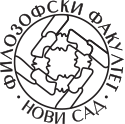MILYEN FÁKON TEREMNEK MIKSZÁTH KÁLMÁN REGÉNYEI?
Absztrakt
A dolgozat Mikszáth Kálmán regényeinek helyét keresi, de a szerző az ezredfordulós magyar kutatás posztmodern preferenciáit elutasítva külön utakat keres a kutatás számára. Az értekező a Mikszáth-regények színes vitális-komikus-humoros karakterét megértési alapként gondolja el, s a realizmuson inneni regényrétegeket, a természetes emberségen alapuló közösségek, védett mikrokozmoszok szféráit éppúgy bemutatja, a narráció spontán közvetlenségét épp annyira hangsúlyozza, mint az író mély szociálpszichológiai dezillúzióját, színház-szerkezetű világvízióját s a narrátori irónia, az „átképzeléses” beszédmód, nézőpontváltó technika fontosságát, karakteres egyediségét. A vizsgálódások tükrében az olvasónak „az elnéző értékelés közösségét” kínáló Mikszáth, bár nem posztmodernnek, de nagyon korszerűnek mutatkozik, s a magyar író európai társaihoz (Fieldinghez, Smolletthez, Dickenshez, Gogolhoz, a Bildungsromanhoz, a francia, német, angol realizmushoz) mérten is vitathatatlanul szuverén regényformát teremt, különlegesen variábilis narrációt alkalmaz.
Hivatkozások
Frye, Northrop. 1967. The Four Forms of Prose Fiction. In The Theory of the Novel, szerk. Philip Stevick. 31–44. New York, London: Macmillan.
Goffmann, Erwing. 1956. The Presentation of Self in Everyday Life. Edinburgh: Edinburgh University Press.
Hajdu Péter. 2001. Az anekdota fogalmáról. In Romantika: világkép, művészet, irodalom, szerk. Szegedy-Maszák Mihály–Hajdu Péter. 66–81. Budapest: Osiris.
Hajdu Péter. 2007. Az anekdota mint a magyar élet tükre. In Az irodalom történetei. 1800-tól 1919-ig, szerk. Szegedy-Maszák Mihály. 418–429. Budapest: Gondolat Kiadói Kör.
Hajdu Péter. 2010. A Noszty fiú esete Tóth Marival. Budapest: Akkord.
Hajdu Péter. 2011. Krimi Jókai-módra. In Elbeszélés a 19. és 20. század fordulóján, szerk. Hajdu Péter–Kroó Katalin. 119–135. Budapest: L’Harmattan.
Harpham, Geoffrey Galt. 2002. Language Alone. The Critical Fetish of Modernity. London–New York: Routledge.
Hász-Fehér Katalin. 1997. A vígjáték és a regény párbeszéde. Diákmelléklet 6. Tiszatáj (1): 1–12.
Kayser Wolfgang. 1998. A modern regény keletkezése és válsága. In. Narratívák 2: Történet és fikció, szerk. Thomka Beáta. 173–202. Budapest: Kijárat.
Mikszáth Kálmán. 1886. A Tisztelt Ház. Budapest: Singer és Wolfner.
Mikszáth Kálmán. 1957a. A demokraták. S. a. r. Király István. Budapest: Akadémiai Kiadó.
Mikszáth Kálmán. 1957b. Szent Péter esernyője. S. a. r. Bisztray Gyula. Budapest: Akadémiai Kiadó.
Mikszáth Kálmán. 1960. A Noszty fiú esete Tóth Marival II. S. a. r. Rejtő István. Budapest: Akadémai Kiadó.
Mikszáth Kálmán. 1961. A fekete város. S. a. r. Király István. Budapest: Akadémai Kiadó.
Mikszáth Kálmán. 1968. Elbeszélések. A tót atyafiak, A jó palócok. S. a. r. Bisztray Gyula. Budapest: Akadémiai Kiadó.
Nagy Sándor. 1914. Mikszáth humora. Irodalomtörténet 3. 441–450.
Nemoianu, Virgil. 1977. Micro-harmony: The Growth and Uses of the Idyllic Model in Literature. Frankfurt am Main–Las Vegas: Peter Lang–Bem.
Nyilasy Balázs. 2011. A 19. századi modern magyar románc. Budapest: Argumentum. Nyilasy Balázs. 2015. A nyelv mítosza, a huszadik század és az ezredfordulós magyar irodalomértés. Magyar Művészet 3 (1): 150–158.
Schöpflin Aladár. é. n. [1941]. Mikszáth Kálmán. Budapest: Franklin.
S. Varga Pál. 2008. A narratív sémák szerepe A Noszty fiúban. In „A Noszty fiú esete Tóth Marival”, szerk. Milán Orsolya. 7–29. Budapest–Szeged: Gondolat–Pompeji Alapítvány.








